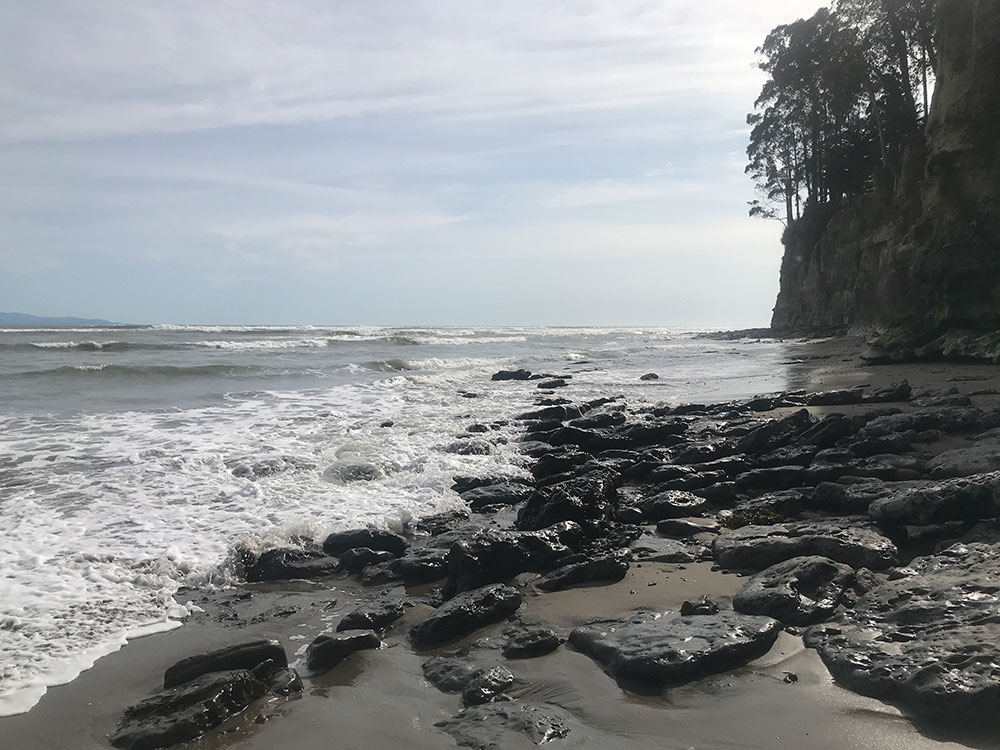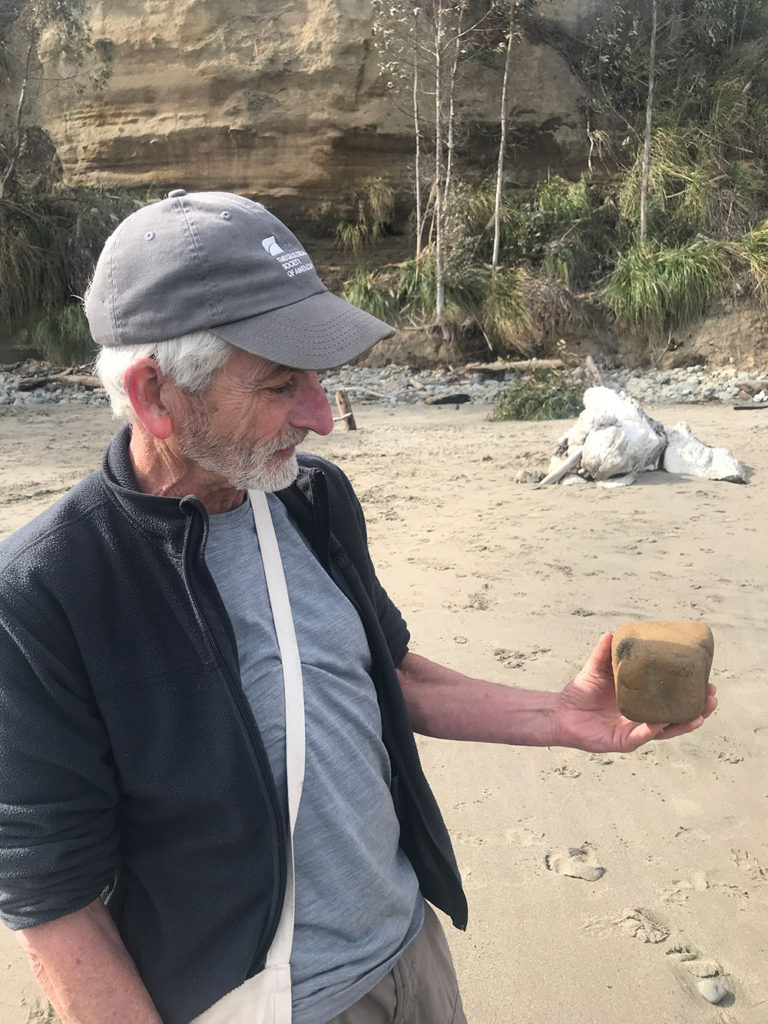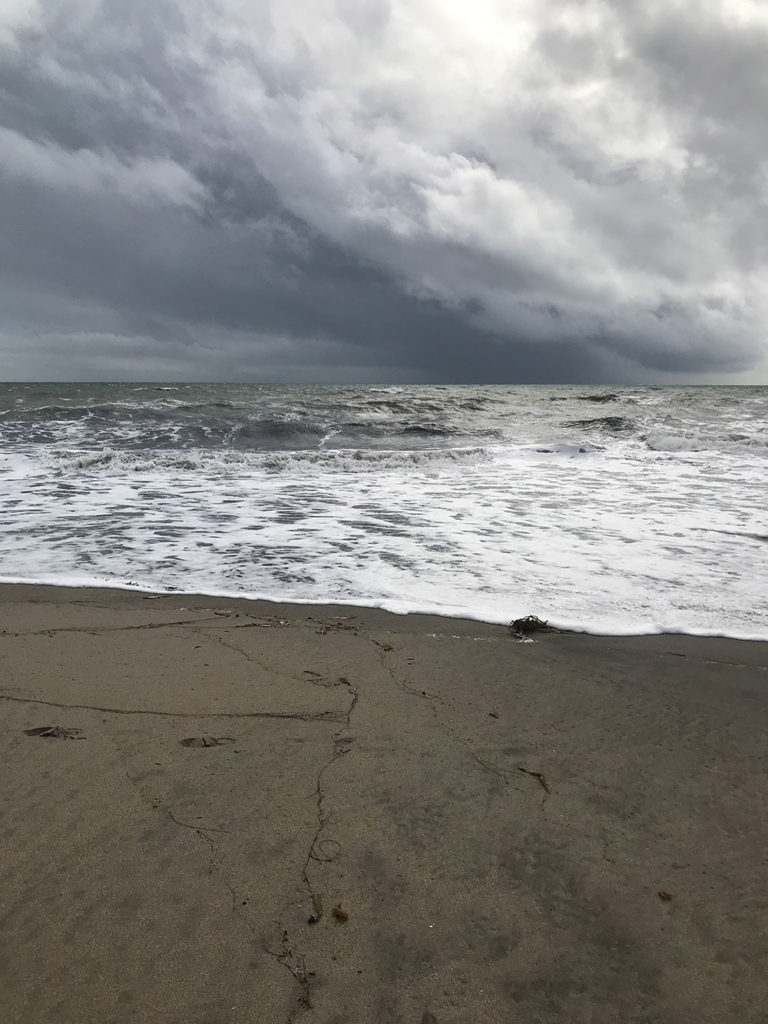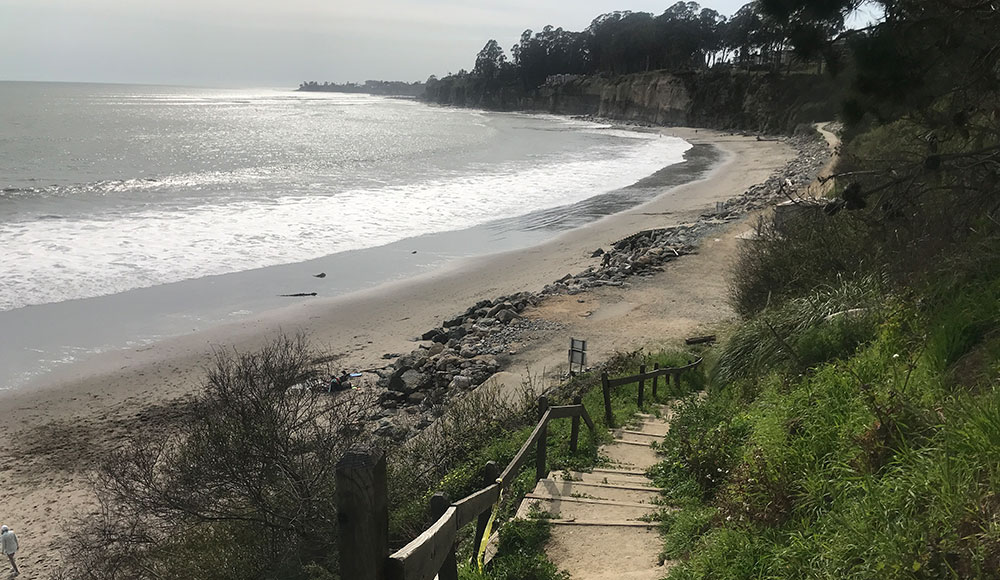By walking you are not going to meet yourself. By walking, you escape from the very idea of identity, the temptation to be someone, to have a name and a history. —Friedrich Nietzsche
The California coastline is renowned for its stunning beaches, each with its own unique formation story. One such gem is New Brighton State Beach, among the most popular beachfront campgrounds in California, offering over 100 developed campsites. It has blufftop views of the Monterey Bay Marine Sanctuary, a visitor center museum, shade ramada for group picnics and special events, and campfire center with free summer programs.
My day starts in San Diego where my love life with Julie is admittedly environmentally unsustainable; she bought a condo in San Diego (my wife is half Italian and half Chardonnay) to be near her grandbabies and I’ve got to drive 500 miles to see if I can get lucky. I spend two weeks down there and can report that we throw a seven every time we roll the dice. I leave Julie’s house in San Diego at 6am and make it to New Brighton Beach State Park Campground south of Santa Cruz by 3pm.
My hiking buddy Laurence Bedford had told me he lived at New Brighton Beach State Park when he first moved to Santa Cruz 30 years ago, and I decide to buy a night camping there to see what it’s like. These days, a camping reservation for New Brighton Beach Campground costs $44 dollars for the night (there are taxes and booking fees.) If I ever decide to go homeless, renting campsites in California State Parks would fill up a credit card fast.
That night I didn’t have a tent or sleeping bag, so I slept in the back of my Prius. I’m a big guy: couldn’t turn over; my nose was four inches from the ceiling; I felt like I was getting a seven-hour MRI. But the next morning I felt inexplicably refreshed. I highly recommend the Brighton Beach State Campground, if the $44 fee doesn’t piss you off too much.
My hiking compadres, Sleepy John Sandidge and Laurence Bedford, meet me down on the beach at 3:30pm and we head south along the water’s edge.
As we walk this stunning beach, wondering what made this geological majesty happen, I meet Dwight Harbaugh, a retired geologist and Stanford researcher. He tells me how the formation of these beach cliffs started with the uplift of the Santa Cruz Mountains, a result of tectonic plate movement along the San Andreas Fault. Over millions of years, the relentless forces of erosion from wind and water have sculpted the coastline, wearing away the mountains and depositing them on the coastline.
Dwight explains that the beach owes its formation to the interaction between the San Lorenzo River and the relentless waves of the Pacific. The San Lorenzo River winds through the Central Coast and takes the mountains along with it. The cliffs that flank the beach are composed of sedimentary rocks such as sandstone and shale.

My walk turns into a Dwight Harland geology lesson about how the Central Coast developed its marine terraces. We climb up to the campground, where there is clearly a flat plane running on top of the cliffs above the ocean. Due to the two tectonic plates colliding, the Pacific and the North American (and by the way, they are actively colliding right now—there is tectonic violence afoot!), they continue to push together and lift the most recent terrace where the campground sits. The terrace that the campground is on rises less than one millimeter a year. I’m getting a nosebleed just thinking about it, but hey, geology does play the long game.
At New Brighton Beach you can see how erosion is crumbling the cliff walls that created this youngest marine terrace. Building a mansion on the edge of the cliff so you have a great view is Mr. Magoo shortsighted. You can look at the ocean for a while, but someday, sooner rather than later, your view will be from under the water.
What we’re hiking over is a magical confluence of wave energy, tectonic plates colliding and erosion crumbling the whole thing down. Dwight tells me that the next oldest marine terrace can be seen driving south on Highway 1; if you look inland, you can see the flat plane, much more eroded than the terrace we stand upon at New Brighton Beach. Dwight and I schedule a rendezvous for some geology schooling.

My compadres and I walk down the beach, by coastal vegetation, dune grasses and shrubs. The sun lowers over the ocean and shines off the water, lighting up the cliffs we walk along. There is no destination; we just don’t want to stop. We keep walking by the empty mansions on the beach, owned by people who never come here. The tall cement pillars holding up the empty houses are cracked and broken from the logs that the ocean waves drive into the cliffs. I wonder if the super-rich who park their money in these empty houses even know that their house foundations are being destroyed by an angry Pacific Ocean.

How to get there: New Brighton State Beach, 1500 Park Ave., Capitola. 7:30am-8:30pm. Free, but parking is $10. Park up in the neighborhoods and walk down. This park has wheelchair-friendly paths around the Monterey pine-shaded campground on the bluff and new, accessible restrooms and campsites. It also offers beach wheelchairs. Call 831-464-6329 or 831-763-7063.
Beach wheelchairs are equipped with large, wide wheels that can roll across the sand without sinking. They need someone pushing them, although several California locations offer motorized chairs which may be self-propelled.














Nice article Richard.
My past work as a staff geologist at the SLAC national lab was doing environmental restoration work, not so much performing research. Though local streams have some effect, the shaping of New Brighton and other local beaches is primarily controlled by the interaction of ocean waves and the land.